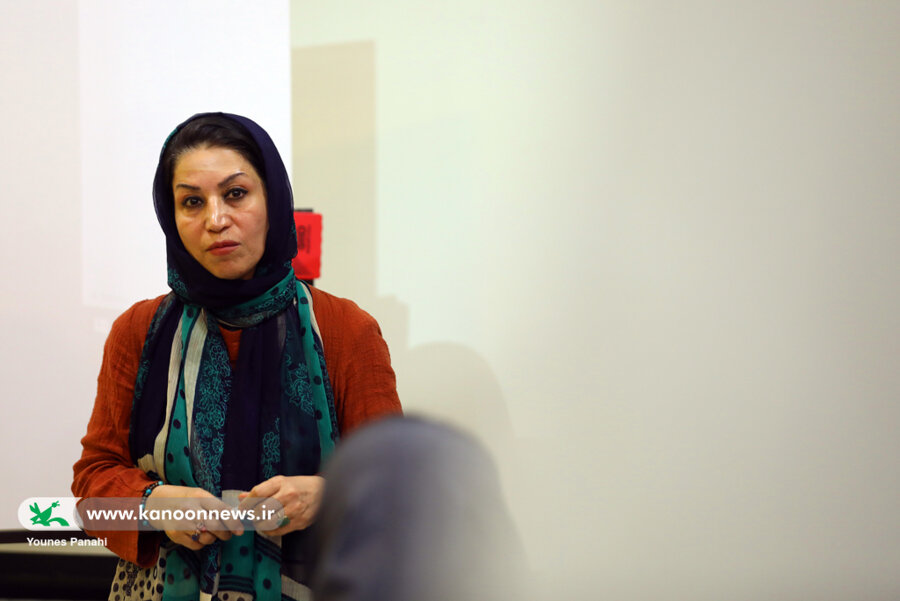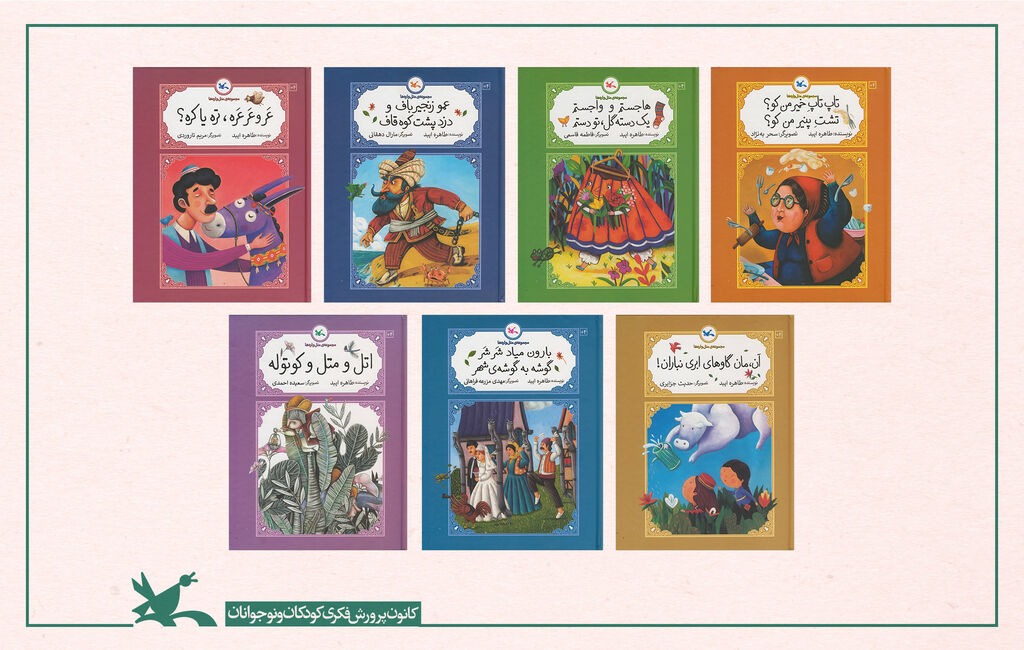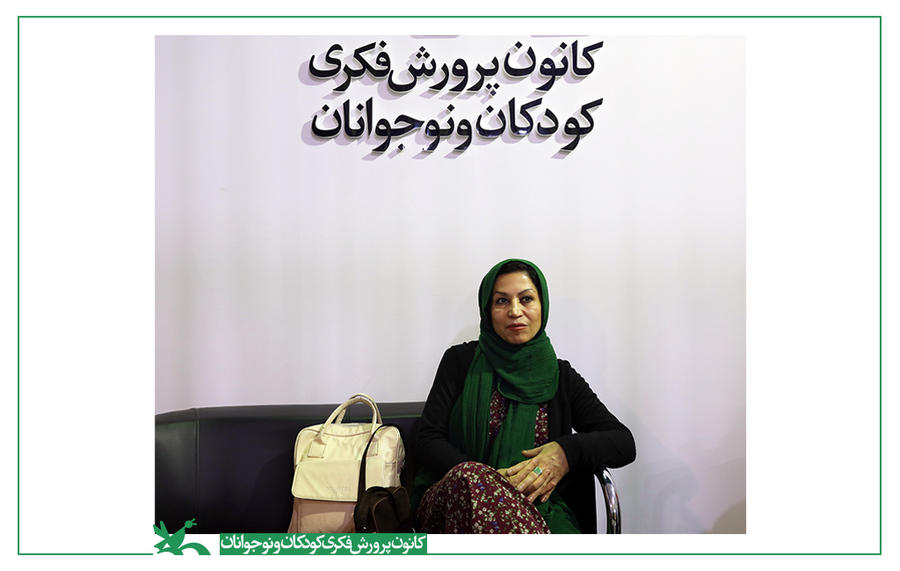To create the seven-volume collection, Tahereh Ibod has gone to “Fables”. Naturally, talking about all the details of every book calls for a lot of time; but, we are short of time and cannot talk about all the details of “Atal, Matal, Kootooleh (shorty)”; “An, Man, Do Not Rain Cloud Cows”; “I Jump up, a Bunch of Flowers in my Hand”; “Uncle Chain Weaver and Ghaf Mountain Thieves ” .
Interview by Tahmineh Haddadi
You have used fables in your new work. The feature of this collection is that it is created for small kids. Before this, we witnessed recreations and rewritings in this field for children and adolescents. How this decision was formed?
Through a research about fables and play-sing songs, in addition to the characteristics that resulted in fables’ lasting, I noticed their function and its effect on rearing imagination, learning languages and other cases in children.
Since in some fables like Uncle Chain Weaver, Crow Fly (Kalagh Par), Atal Matal there are familiar or strange characters, but they lack today story structure, this idea was formed in my mind: Write stories with characteristics, personalities and adventures as close as to those of the fables. I suggested my idea and plan to Roshd New Grade-schooler Magazine Council of Story. The members of the council welcomed it and this collection was formed.
Which characteristics and forms are employed to create these works?
To write the fables, three important features were considered:
a) Employing music and elements of language like phonotactics, versing and repetition.
b) Employing key words in fables for stories like Dou Dou Afandou…Top Top Dough… I Jump and Jump
c) Designing the plot of the story in a way that can combine two important characteristics of fables I previously mentioned.
Time and atmosphere of the stories are selected according to the plot yet all are different.

Our first encounter as adults is the boldness of the phonetic characteristic in the choosing the fables. Do you think there is a need to revive this part for the sake of kids as audience since there is a change in taste and need of the audience?
One of the significant characteristics of fables having a role in their creation is group games. It is right that due to a change in lifestyle in big cities group games are fading yet not getting obsolete and they will not; because, children need group games to acquire social skills; absence of group games has negative effect on the process of child growth.
No matter how much technology makes lifestyle mechanical, it cannot meet infants and children’s needs for learning a language. Learning a language is a gradual process; it depends on the evolution of nervous system, physiological growth and perceptual power happening gradually. Infant’s vocal cords grow and are strengthened by practicing sounds. For instance, we do not have Schwa (a colorless voice) in Farsi. Our vocal cords are not formed to produce this sound easily. It needs a lot of practice. At this spot, we can discover the importance of fables. Various sounds, phonotactics, rhythmic narrations and repetition in fables attract infants and children’s attention and persuades them to repeat.
If you wish to point at one of the uses of this collection, which one you would pick up?
One of the functions of fables and play songs is producing excitement, happiness and freshness in children at the “moment” (present time). The thing that makes reading or listening to the stories and fantasies enjoyable for the audience is the characters and happenings that get the audience involved, brings about waiting in them, and makes them guess. The mind goes after “What will happen next”. “Will” refers to future so the audience mind is directed from present to future.
This process of mind is to predict a personal ending for the story therefore enjoyable for the audience. This collection is an endeavor for a dual enjoyment of the time for the audience. Of course, it is a new experience. We must wait for the feedback.


